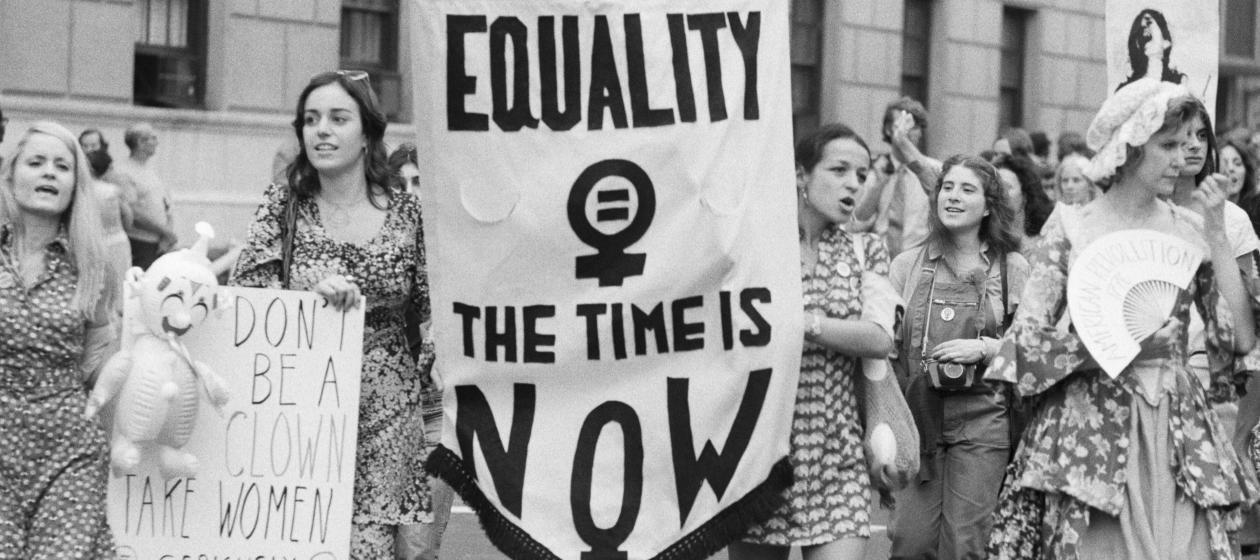
Landmarks in Women's Rights – A Struggle full of Highs and Lows
by Yash Saboo October 13 2017, 9:54 am Estimated Reading Time: 3 mins, 17 secs“Never doubt that a small group of thoughtful, committed women can change the world. Indeed, it’s the only thing that ever has.” - Margaret Mead
Some very important and essential changes have taken place in the last four decades including major international conferences, global goals, and changing of people's mentality towards women. It has been a journey of big leaps, small steps and setbacks. Here's a timeline of key years which lead to major changes in women's lives.

1975: The first world conference on the status of women was convened in Mexico City to coincide with the 1975 International Women's Year, observed to remind the international community that discrimination against women continued to be a persistent problem in much of the world. Described as the “the greatest consciousness raising event in history”, the conference ended with a 10-year action plan to advance women’s rights, including targets to improve access to healthcare and increase family planning services.

1980: 145 Member States gathered for the mid-decade World Conference of the United Nations Decade for Women in Copenhagen. It aimed to review progress in implementing the goals of the first world conference, focusing on employment, health and education. A Programme of Action called for stronger national measures to ensure women’s ownership and control of the property, as well as improvements in protecting women’s rights to inheritance, child custody, and nationality.
1985: The World Conference to Review and Appraise the Achievements of the UN Decade for Women took place in Nairobi. The conference’s mandate was to establish concrete measures to overcome obstacles to achieving the Decade’s goals
1994: At the international conference on population and development, in Cairo, 179 countries recognized that women’s reproductive health and rights should be the cornerstone of all programmes seeking to address population and development.
2000: (Follow-up to Beijing)
The General Assembly decided to hold a 23rd special session to conduct a five-year review and appraisal of the implementation of the Beijing Platform for Action, and to consider future actions and initiatives. “Women 2000: Gender Equality, Development, and Peace for the Twenty-First Century” took place in New York, and resulted in a political declaration and further actions and initiatives to implement the Beijing commitments.
2005: A 10-year review and appraisal of the Beijing Platform for Action were conducted as part of the 49th session of the Commission on the Status of Women, 2005. Universal access to family planning is added as a target to MDG 5. While global contraceptive prevalence rates have doubled since 1990, only 22% of women are using some form of contraception. Research shows that women who have completed secondary education are more likely to use contraception.
2010: The UN, aiming to accelerate its work towards gender equality, merges the work of four separate strands of the organization to create UN Women. The newly formed organization has a big brief – from addressing violence against women to economic empowerment and promoting women in leadership – but a small budget.
2015: Contraceptive prevalence rates have risen to 64% globally among married women or women in a union, but huge disparities remain between regions. In mid-2013, the UN Economic and Social Council requested the Commission on the Status of Women to review and appraise the implementation of the Platform for Action in 2015, in a session known as Beijing+20.
2017: The US president reinstates the global gag rule on his first full day in the White House. The US defunds the UNFPA. In his budget, he announces there will be no funding for international family planning. The US was previously the world’s largest bilateral donor for a family plan.
Driven by the Dutch, other states and organisations like the Bill and Melinda Gates Foundation raise €181m to help plug the gap, as part of the She Decides campaign. While the money raised is impressive, it is a small fraction of the $600m a year the US spends on family planning.





-173X130.jpg)
-173X130.jpg)
-173X130.jpg)
-173X130.jpg)

_(7)-173X130.jpg)
-173X130.jpg)